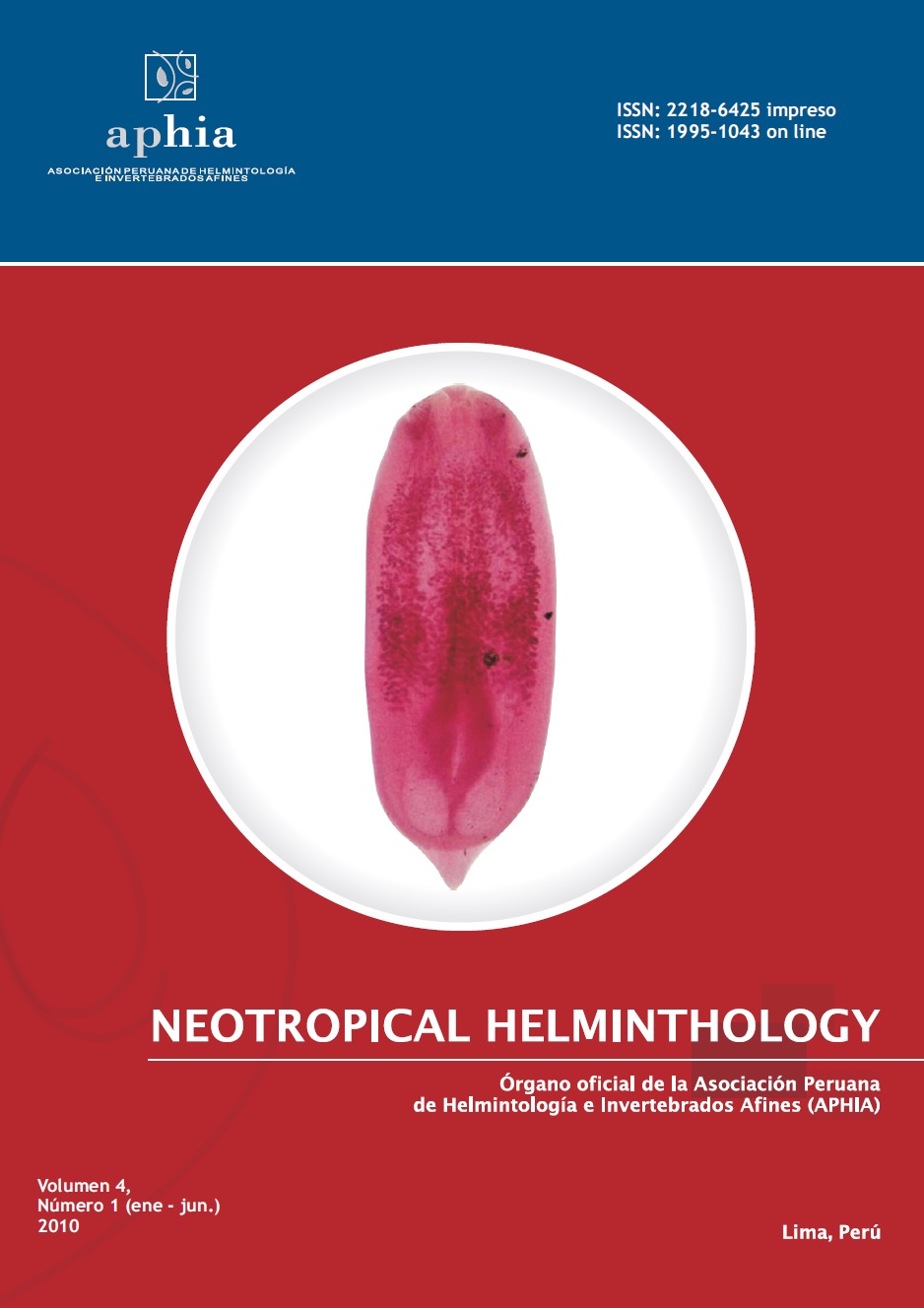EVALUATION OF HAEMATOLOGICAL CHANGES IN PARASITIC HELMINTHS AND PROTOZOA INFECTIONS IN DOGS (CANIS LUPUS FAMILIARIS, LINNAEUS, 1758)
DOI:
https://doi.org/10.24039/rnh2010411090Keywords:
Dogs, Fecal examination, Haematological changes, Helminths, Parasitism, ProtozoaAbstract
In the present study complete blood cell count was performed in samples from 100 dogs positive for helminths and/or protozoa in fecal examination, to identify possible abnormalities related to intestinal parasitism. For parasitological diagnosis, the samples were subjected to the sieving method and further analyzed through the techniques of Willis, Faust and Hoffman. The blood counts were performed with the aid of an automated hematology analyzer and morphological evaluation by blood smear stained with rapid Panotic kit using optical microscopy bright field. The analysis of fecal samples revealed that the parasite Ancylostoma sp. was more frequent (42%), followed by Cystoisospora sp. (20%), Giardia sp. (20%), Giardia and Cystoisospora (4%), Toxocara sp. (3%), Ancylostoma and Giardia (3%), Dipylidium caninum (Linnaeus, 1758) (2%), among others (6%). The most common abnormalities found were anemia, thrombocytopenia and leukocytosis, in both helminth and protozoa infections. None of the dogs parasitized by protozoa showed blood eosinophilia, only those with helminths infections. All animals studied showed negative results in search of blood hematozoa through of buffy coat preparation. The changes observed in infected animals can serve as an indicator of the presence of parasites, thus these data can be used in conjunction with fecal diagnostic techniques, to obtain a better assessment of the severity of parasitism in the host.
Downloads
Published
How to Cite
Issue
Section
License

This work is licensed under a Creative Commons Attribution-NonCommercial-NoDerivatives 4.0 International License.
OBJETO: El AUTOR-CEDENTE transfiere de manera TOTAL Y SIN LIMITACIÓN alguna al CESIONARIO los derechos patrimoniales que le corresponden sobre la (s) obra(s) tituladas: xxxxxxxxxxxxxxxx, por el tiempo que establezca la ley internacional. En virtud de lo anterior, se entiende que el CESIONARIO adquiere el derecho de reproducción en todas sus modalidades, incluso para inclusión audiovisual; el derecho de transformación o adaptación, comunicación pública, traducción, distribución y, en general, cualquier tipo de explotación que de las obras se pueda realizar por cualquier medio conocido o por conocer en el territorio nacional o internacional.
REMUNERACIÓN: La cesión de los derechos patrimoniales de autor que mediante este contrato se hace será a título gratuito.
CONDICIONES Y LEGITIMIDAD DE LOS DERECHOS: El AUTOR-CEDENTE garantiza que es propietario integral de los derechos de explotación de la(s) obra(s) y en consecuencia garantiza que puede contratar y transferir los derechos aquí cedidos sin ningún tipo de limitación por no tener ningún tipo de gravamen, limitación o disposición. En todo caso, responderá por cualquier reclamo que en materia de derecho de autor se pueda presentar, exonerando de cualquier responsabilidad al CESIONARIO.
LICENCIA DE ACCESO ABIERTO: El AUTOR-CEDENTE autoriza que manuscrito publicado en La Revista Neotropical Helminthology permanece disponible para su consulta pública en el sitio web https://www.neotropicalhelminthology.com/ y en los diferentes sistemas de indexación y bases de datos en las que la revista tiene visibilidad, bajo la licencia Creative Commons, en la modalidad Reconocimiento-No comercial- Sin Trabajos derivados –aprobada en Perú, y por lo tanto son de acceso abierto. De ahí que los autores dan, sin derecho a retribución económica, a la Asociación Peruana de Helmintología e Invertebrados Afines (APHIA), los derechos de autor para la edición y reproducción a través de diferentes medios de difusión.


 Numero 2 Volumen 19 - 2025 (versión Anticipada)
Numero 2 Volumen 19 - 2025 (versión Anticipada)














































